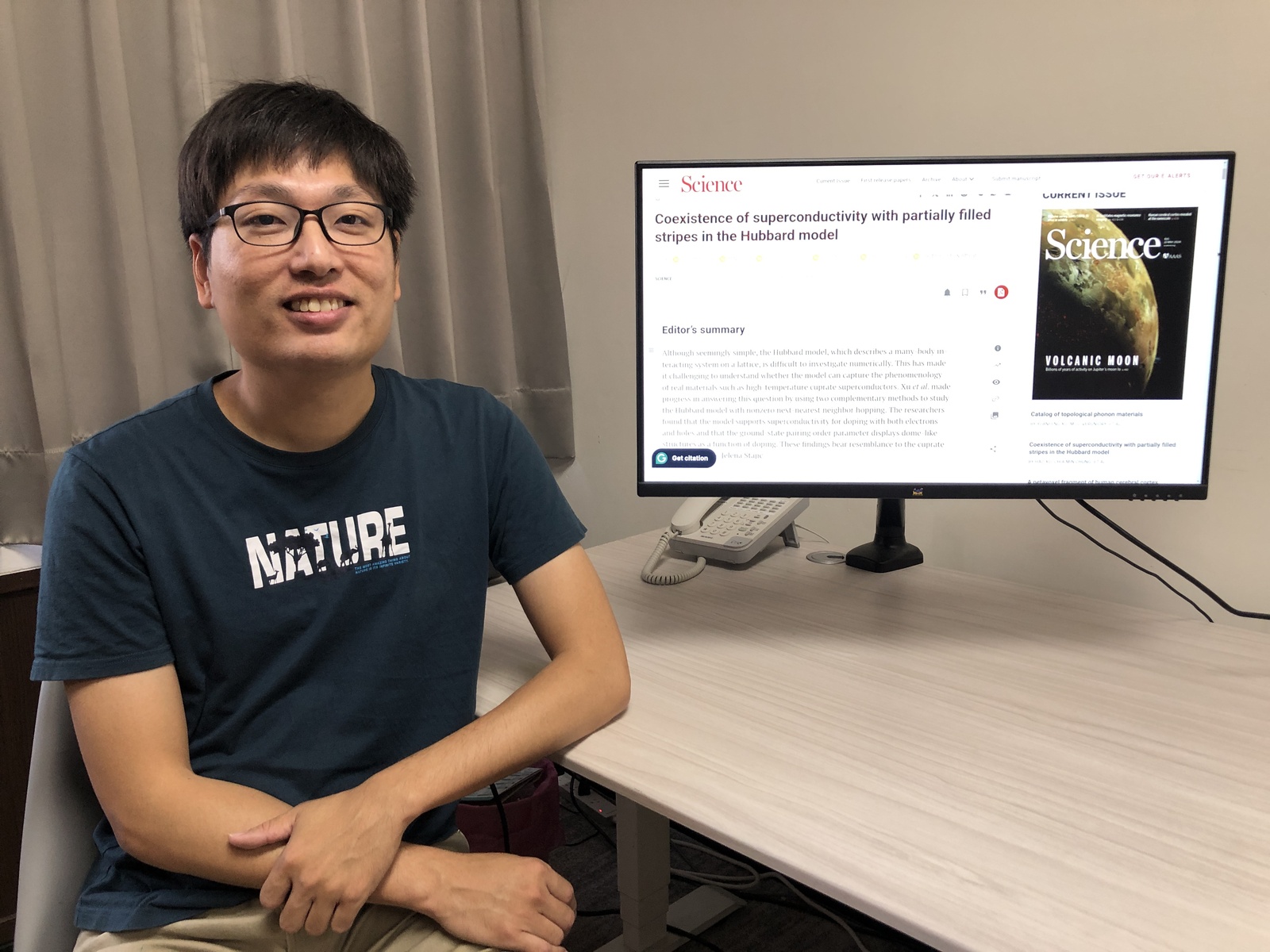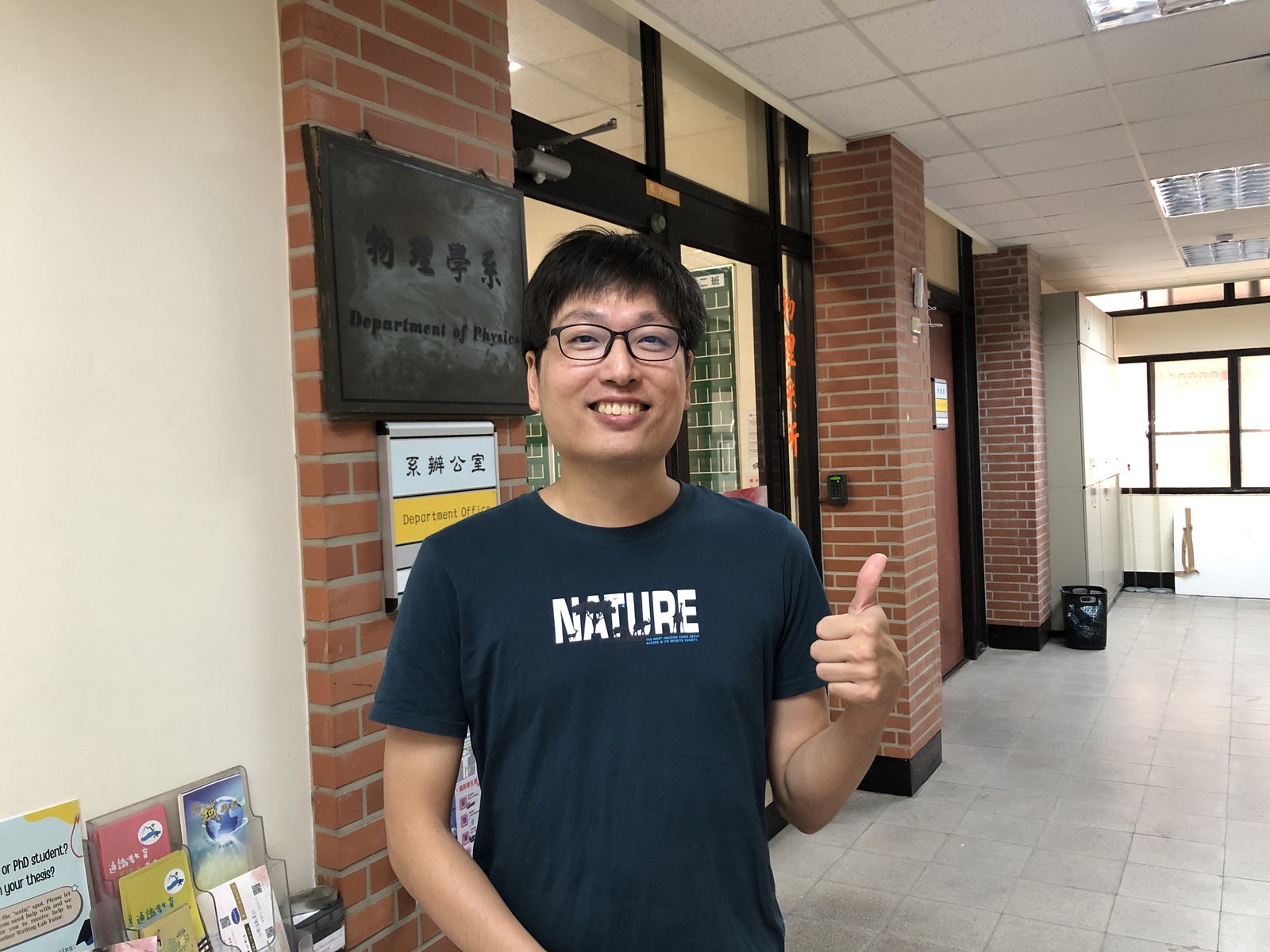NSYSU’s research cracked the 30-year theoretical model of high-temperature superconductivity and was published in Science



2024-05-10
A breakthrough in the research on theoretical models of high-temperature superconductors! Chia-Min Chung, Assistant Professor of the Department of Physics at National Sun Yat-sen University (NSYSU), formed a multinational research team with academic institutions in the United States and Germany to simulate and calculate the theoretical model of high-temperature superconductors using numerical methods, accurately simulate the system and successfully obtained a definite answer on the theoretical model of high-temperature superconductors that scientists around the world have been debating in the past 30 years. This remarkable research result was published in the world's top authoritative journal "Science."
Chia-Min Chung, Assistant Professor of the Department of Physics at NSYSU, emphasized that superconductors are conductors with zero electrical resistance and can only produce such characteristics at extremely low temperatures. In contrast, high-temperature superconductors can operate at a higher temperature than traditional superconductors, about minus 200 degrees Celsius. Since high-temperature superconductivity was discovered in 1986, whether it can achieve superconductivity at room temperature has been a goal pursued by physicists. For decades, scientists have calculated the theoretical mechanism of high-temperature superconducting ground states in various ways. However, they are still unable to fully understand it due to deviations such as strong system correlation and quantum fluctuation, as well as competition between low-energy states at low temperatures.
The development of numerical methods has provided an important driving force for theoretical research on high-temperature superconductivity. The research team used the numerical methods of strongly correlated systems to calculate the low-temperature state of the high-temperature superconducting model, breaking through previous limitations, proposing definite answers, and explaining its theoretical mechanism, striding a critical step forward in a vital problem that has been widely studied within the condensed matter physics community. Chia-Min Chung pointed out that in addition to condensed matter systems, numerical methods of strongly correlated systems can also be applied to high-energy physics, quantum chemical systems, or biological systems, opening up innovative approaches for research and being of great significance to the advancement of theoretical physics.
Chia-Min Chung further explained that the importance of this model construction research is that scientists finally have the ability to understand the superconducting model's low-temperature properties accurately and can further gain insight into the theoretical mechanism of high-temperature superconductivity. The results calculated by the theoretical model are consistent with experimental observations and contribute to subsequent applications of high-temperature superconductivity. Chia-Min Chung said that classical computers and quantum computer algorithms play complementary roles and can modify and progress each other. In terms of future research designs, hybrid computing that combines quantum computers and classical computers can be used to assist the study of complex systems to a considerable extent, such as high-temperature superconductivity for nuclear magnetic resonance, as well as numerical construction models such as quantum computer calculations and machine learning, etc., providing reference basics for theoretical physics.
The research team pointed out that this study combined the numerical methods of quantum Monte Carlo and density matrix renormalization group to calculate the ground state of the Hubbard model of the next nearest neighbor hopping. Superconducting states have been found in both the electron- and hole-doped regimes, and the relationship between the superconducting order and doping is generally consistent with the experimental phase diagram for temperature. Numerical methods based on tensor networks are developing rapidly. If physical quantities highly relevant to experiments can be calculated, such as single-mode excitation spectrum and conductivity, the theory can further explain the phenomena observed experimentally.
Members of the multinational research team also include Professor Shiwei Zhang of the Flatiron Institute and Professor Steven R. White of the University of California, Irvine, from the United States, and Professor Ulrich Schollwöck of the Ludwig-Maximilians-Universität in Germany et al. This research is the second time Chia-Min Chung has published a paper in the journal "Science" after continuing his in-depth cooperation with relevant researchers after first publishing in 2017.
"Science" is a globally top authoritative journal, and its 2022 Journal Impact Factor is 59.6. In the category of Multidisciplinary Sciences, it ranks 2nd among 73 journals by Journal Impact Factor and 2nd among 134 journals by Journal Citation Indicator. Journal article online link: https://www.science.org/doi/10.1126/science.adh7691
